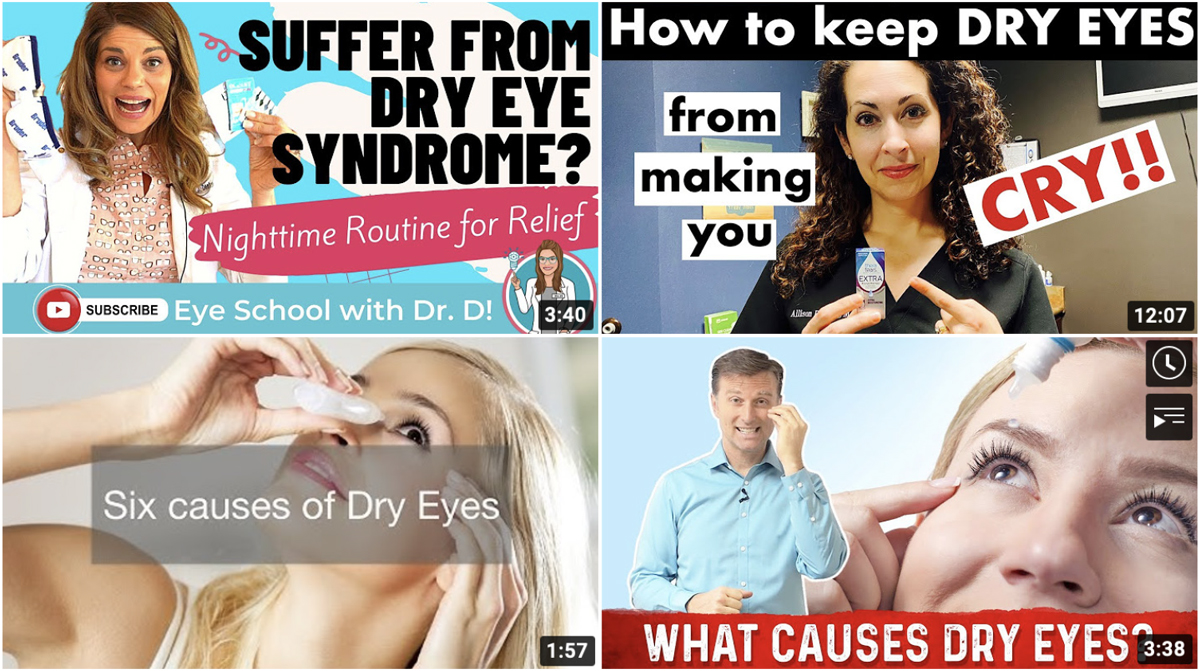 |
| YouTube videos about dry eye disease made by physicians are more reliable and educational, study suggests. Photo: YouTube/Google. Click image to enlarge. |
With the convenience created by the Internet in accessing medical information, the concerns about this information’s reliability should not be ignored. Because of YouTube's vast video library, users can easily search for and obtain a variety of surgical videos, health information and treatment options. A recent study evaluated the demographic features, quality and reliability of YouTube videos addressing dry eye disease (DED) and noted that only a minority are of good or excellent quality, with videos uploaded by medical institutes or academic societies scoring higher.
The researchers included the first 500 videos that emerged using the search term “dry eye disease.” Duplicated-split videos, videos shorter than 60 seconds, videos in a language other than English or videos with an unintelligible English accent and videos unrelated to DED were excluded. The study assessed the remaining 238 videos. The DISCERN scoring system evaluated the reliability of a publication and the quality of information on treatment options offered to the patient. The Global Quality Score assessed a video in terms of its educational quality for patients. The researchers invented the Video Quality Score to assess educational information about the causes of DED, the disease's symptoms and its treatment.
All videos were of moderate quality in all three scoring systems. Videos uploaded by medical institutes and academic societies scored higher in quality than those uploaded by physicians, which were still significantly higher quality than all the other groups. The researchers also noted that user interactions were weakly correlated with quality, suggesting this factor is not a good indicator of the quality of YouTube videos on DED.
“Consensus reports that describe how the educational medical videos should be can contribute to the increase in quality of these videos,” the authors concluded in their paper. “Therefore, a central video platform, where professional medical organizations are involved and standardized and peer-reviewed videos can be shared publicly, could contribute to increasing the quality of the medical videos.”
Sakallioğlu AK, Garip R. What hundreds of millions of patients with dry eye will find on youtube: a quality and reliability research of the YouTube videos. Cornea. May 13, 2022. [Epub ahead of print]. |

